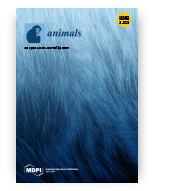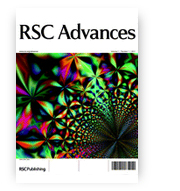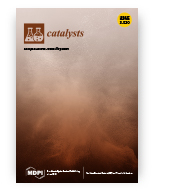A Cat Skeleton from the Balatlar Church Excavation, Sinop, Turkey
Vedat Onar, Gulgun Koroglu, Altan Armulak, Ogul Emre Oncu, Abu Bakar Siddiq, Aleksander Chrószcz
Animals
 In the 2015 excavation season, an east–west oriented burial (2015-Grave-14) built with large dimension stone blocks was unearthed on the south edge of “Area IVi” at the Balatlar Church in Sinop, on the northeastern Black Sea coast of Turkey. In this grave, which is dated between the end of the 6th century AD and the first half of the 7th century AD, a human skeleton was found with the head to the west and a cat skeleton was carefully placed next to the right femur. This study on the burial and the cat skeleton within it shows that, compared to the Roman period, the status of cats reached a higher level during the Byzantine period. It was found that alongside of being a pet, the Balatlar cat was a young healthy female individual that instinctively hunted rodents and birds, given that the remains of a rat and a sparrow were found in the region of the abdominal cavity, corresponding with the stomach location in the living animal. The grave presents the most significant direct archaeological evidence of a pet–human bond recorded at any Byzantine site so far.
In the 2015 excavation season, an east–west oriented burial (2015-Grave-14) built with large dimension stone blocks was unearthed on the south edge of “Area IVi” at the Balatlar Church in Sinop, on the northeastern Black Sea coast of Turkey. In this grave, which is dated between the end of the 6th century AD and the first half of the 7th century AD, a human skeleton was found with the head to the west and a cat skeleton was carefully placed next to the right femur. This study on the burial and the cat skeleton within it shows that, compared to the Roman period, the status of cats reached a higher level during the Byzantine period. It was found that alongside of being a pet, the Balatlar cat was a young healthy female individual that instinctively hunted rodents and birds, given that the remains of a rat and a sparrow were found in the region of the abdominal cavity, corresponding with the stomach location in the living animal. The grave presents the most significant direct archaeological evidence of a pet–human bond recorded at any Byzantine site so far.
10.3390/ani11020288
Changes in Honeybee Behavior Parameters under the Influence of the E-Field at 50 Hz and Variable Intensity
Paweł Migdał, Agnieszka Murawska, Paweł Bieńkowski, Ewelina Berbeć, Adam Roman
Animals
 EM-fields come from both natural and anthropogenic sources. This study aimed to investigate changes in honeybee behavior parameters under the influence of an electric field at 50 Hz and variable intensity. Bees were exposed for 1 h, 3 h, or 6 h to the following artificial E-field intensities: 5.0 kV/m, 11.5 kV/m, 23.0 kV/m, or 34.5 kV/m. Bees in the control group were under the influence of an E-field <2.0 kV/m. Six basic behaviors were selected for bee observation (walking, grooming, flight, stillness, contact between individuals, and wing movement). Our research shows the impact of bee exposure time on behavioral change within groups. Exposure for 3 h caused a decrease in the time that bees spent on behaviors and in the number of occurrences. After 6 h, the parameters increased within the groups, as was the case with 1 h exposure. This may indicate that there is a behavioral barrier that allows the pattern to normalize for some time.
EM-fields come from both natural and anthropogenic sources. This study aimed to investigate changes in honeybee behavior parameters under the influence of an electric field at 50 Hz and variable intensity. Bees were exposed for 1 h, 3 h, or 6 h to the following artificial E-field intensities: 5.0 kV/m, 11.5 kV/m, 23.0 kV/m, or 34.5 kV/m. Bees in the control group were under the influence of an E-field <2.0 kV/m. Six basic behaviors were selected for bee observation (walking, grooming, flight, stillness, contact between individuals, and wing movement). Our research shows the impact of bee exposure time on behavioral change within groups. Exposure for 3 h caused a decrease in the time that bees spent on behaviors and in the number of occurrences. After 6 h, the parameters increased within the groups, as was the case with 1 h exposure. This may indicate that there is a behavioral barrier that allows the pattern to normalize for some time.
10.3390/ani11020247
Effect of Intense Exercise on the Level of Bacteroidetes and Firmicutes Phyla in the Digestive System of Thoroughbred Racehorses
Wanda Górniak, Paulina Cholewińska, Natalia Szeligowska, Magdalena Wołoszyńska, Maria Soroko, Katarzyna Czyż
Animals
 Exercise significantly affects the body of both animals and humans, including the composition of the digestive microbiome. This study aimed to determine the changes in the composition of the most numerous bacterial phyla (Firmicutes and Bacteroidetes, as well as the level of the Lactobacillaceae family) in the digestive system of horses under the influence of physical effort. The study included a group of 17 Thoroughbred racehorses at the age of 3 years, fed the same forage, from whom feces samples were collected individually before and 48 h after physical effort. The obtained samples were subjected to DNA isolation and RT-PCR analysis. The results showed a significant increase in the level of both phyla after exercise compared to the state before physical effort; there were no such differences in the level of facultative aerobes, i.e., the Lactobacillaceae family (although a decreasing tendency was found after exercise). In addition, the analysis of the level of the studied phyla indicates individual differences in horses’ response to the effort.
Exercise significantly affects the body of both animals and humans, including the composition of the digestive microbiome. This study aimed to determine the changes in the composition of the most numerous bacterial phyla (Firmicutes and Bacteroidetes, as well as the level of the Lactobacillaceae family) in the digestive system of horses under the influence of physical effort. The study included a group of 17 Thoroughbred racehorses at the age of 3 years, fed the same forage, from whom feces samples were collected individually before and 48 h after physical effort. The obtained samples were subjected to DNA isolation and RT-PCR analysis. The results showed a significant increase in the level of both phyla after exercise compared to the state before physical effort; there were no such differences in the level of facultative aerobes, i.e., the Lactobacillaceae family (although a decreasing tendency was found after exercise). In addition, the analysis of the level of the studied phyla indicates individual differences in horses’ response to the effort.
10.3390/ani11020290
Enzymatic hydrolysis using bacterial cultures as a novel method for obtaining antioxidant peptides from brewers' spent grain
Dominika Ciurko, Wojciech Łaba, Barbara Żarowska, Tomasz Janek
RSC Advances
 Brewers' spent grain was used as a substrate to obtain protein hydrolysates with antioxidant activity. Hydrolysis was conducted in the culture using proteolytic bacteria. Hydrolysis was controlled by measurement of α-amino group concentration and with the aid of size exclusion chromatography. For each culture the degree of hydrolysis was calculated. The most efficient protein hydrolysis was observed in the cultures of Bacillus cereus (43.06%) and Bacillus lentus (41.81%). In addition, gelatin zymography was performed in order to detect bacterial proteases and their activity. The profile of secreted enzymes was heterogeneous, while the greatest variety was observed for Bacillus polymyxa. Brewers' spent grain protein hydrolysates exhibited high antioxidant activity. Bacillus subtilis and Bacillus cereus post-cultured media displayed the highest activity, respectively 1291.97 and 1621.31 μM TEAC per g for ABTS, 188.89 and 160.93 μM TEAC per g for DPPH, and 248.81 and 284.08 μM TEAC per g for the FRAP method.
Brewers' spent grain was used as a substrate to obtain protein hydrolysates with antioxidant activity. Hydrolysis was conducted in the culture using proteolytic bacteria. Hydrolysis was controlled by measurement of α-amino group concentration and with the aid of size exclusion chromatography. For each culture the degree of hydrolysis was calculated. The most efficient protein hydrolysis was observed in the cultures of Bacillus cereus (43.06%) and Bacillus lentus (41.81%). In addition, gelatin zymography was performed in order to detect bacterial proteases and their activity. The profile of secreted enzymes was heterogeneous, while the greatest variety was observed for Bacillus polymyxa. Brewers' spent grain protein hydrolysates exhibited high antioxidant activity. Bacillus subtilis and Bacillus cereus post-cultured media displayed the highest activity, respectively 1291.97 and 1621.31 μM TEAC per g for ABTS, 188.89 and 160.93 μM TEAC per g for DPPH, and 248.81 and 284.08 μM TEAC per g for the FRAP method.
10.1039/d0ra08830g
New Bromo- and Iodo-Hydroxylactones with Two Methyl Groups Obtained by Biotransformation of Bicyclic Halolactones
Małgorzata Grabarczyk, Wanda Mączka, Gabriela Maciejewska, Katarzyna Wińska
Catalysts
 The subject of the research was to determine the ability of the filamentous fungi to biotransform bicyclic halolactones containing two methyl groups in their structure. By chemical synthesis three bicyclic halolactones with two methyl groups, one in the cyclohexane ring and one in the lactone ring, were obtained: 2-chloro-4,7-dimethyl-9-oxabicyclo[4.3.0]nonan-8-one, 2-bromo-4,7-dimethyl-9-oxabicyclo[4.3.0]nonan-8-one, and 2-iodo-4,7-dimethyl-9-oxabicyclo[4.3.0]nonan-8-one. These compounds were formed as mixtures of two diastereoisomers. The obtained halolactones (as mixture of two diastereoisomers) were subjected to screening biotransformation with the use of eight strains of filamentous fungi: Fusarium culmorum AM10, F. avenaceum AM12, F. semitectum AM20, F. solani AM203, Absidia coerulea AM93, A. cylindrospora AM336, Penicillium chermesinum AM113, P. frequentans AM351. Two of the substrates, 2-bromo-4,7-dimethyl-9-oxabicyclo[4.3.0]nonan-8-one and 2-iodo-4,7-dimethyl-9-oxabicyclo[4.3.0]nonan-8-one, were hydroxylated without removing the halogen atom from the molecule, giving 2-bromo-7-hydroxy-4,7-dimethyl-9-oxabicyclo[4.3.0]nonan-8-one, 2-bromo-5-hydroxy-4,7-dimethyl-9-oxabicyclo[4.3.0]nonan-8-one, and 2-iodo-7-hydroxy-4,7-dimethyl-9-oxabicyclo[4.3.0]nonan-8-one as products. The hydroxylation capacity was demonstrated by strains of Absidia cylindrospora AM336, Fusarium avenaceum AM12, and F. solani AM203. The structures of all lactones were determined on the basis spectroscopic data.
The subject of the research was to determine the ability of the filamentous fungi to biotransform bicyclic halolactones containing two methyl groups in their structure. By chemical synthesis three bicyclic halolactones with two methyl groups, one in the cyclohexane ring and one in the lactone ring, were obtained: 2-chloro-4,7-dimethyl-9-oxabicyclo[4.3.0]nonan-8-one, 2-bromo-4,7-dimethyl-9-oxabicyclo[4.3.0]nonan-8-one, and 2-iodo-4,7-dimethyl-9-oxabicyclo[4.3.0]nonan-8-one. These compounds were formed as mixtures of two diastereoisomers. The obtained halolactones (as mixture of two diastereoisomers) were subjected to screening biotransformation with the use of eight strains of filamentous fungi: Fusarium culmorum AM10, F. avenaceum AM12, F. semitectum AM20, F. solani AM203, Absidia coerulea AM93, A. cylindrospora AM336, Penicillium chermesinum AM113, P. frequentans AM351. Two of the substrates, 2-bromo-4,7-dimethyl-9-oxabicyclo[4.3.0]nonan-8-one and 2-iodo-4,7-dimethyl-9-oxabicyclo[4.3.0]nonan-8-one, were hydroxylated without removing the halogen atom from the molecule, giving 2-bromo-7-hydroxy-4,7-dimethyl-9-oxabicyclo[4.3.0]nonan-8-one, 2-bromo-5-hydroxy-4,7-dimethyl-9-oxabicyclo[4.3.0]nonan-8-one, and 2-iodo-7-hydroxy-4,7-dimethyl-9-oxabicyclo[4.3.0]nonan-8-one as products. The hydroxylation capacity was demonstrated by strains of Absidia cylindrospora AM336, Fusarium avenaceum AM12, and F. solani AM203. The structures of all lactones were determined on the basis spectroscopic data.
10.3390/catal11010073









